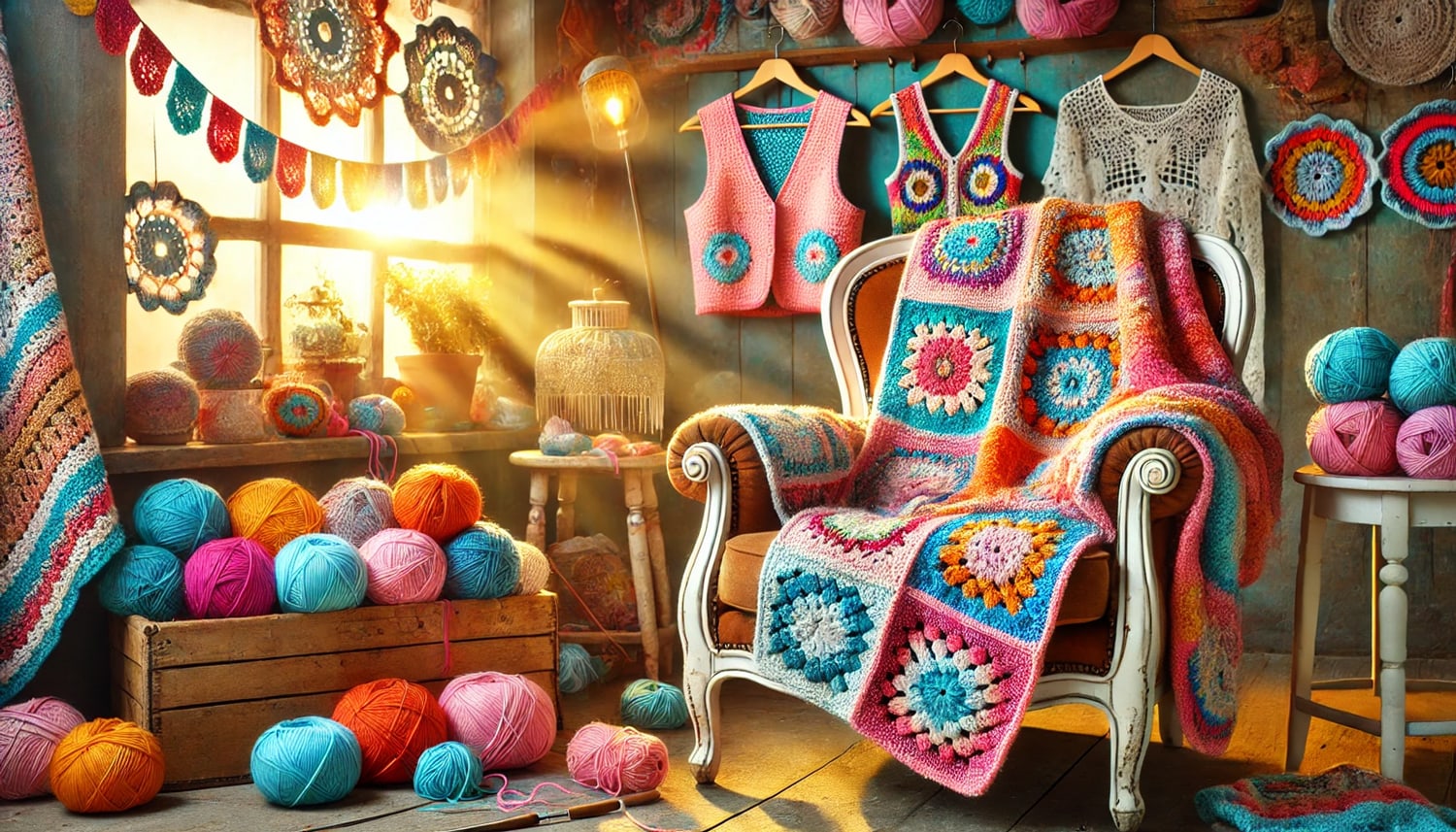If you’ve ever picked up a crochet hook, you know it’s more than just looping yarn around—it’s a superpower. Crochet is relaxing, creative, and, let’s be honest, totally addictive. But did you ever wonder how this magical craft made its way into homes all over North America? Let’s dive into the cool (and sometimes quirky) history of crochet on this side of the pond, told with a little twist of fun!
How Crochet First Landed in North America: Immigrants and Yarn Tales
Crochet didn’t just pop up here out of nowhere; it hitched a ride across the Atlantic thanks to some very crafty European immigrants in the 1800s. Among the most famous crochet pioneers were the Irish. Picture this: it’s the 1840s, and the Irish Potato Famine has hit hard. Food is scarce, but guess what? Crocheting intricate lace was one of the few ways people could make a living. That’s right—crochet wasn’t just a hobby; it was literally a life-saver.
When Irish families fled the famine and headed to North America, they brought their crochet skills with them. Settling in cities like New York and Boston, they started crocheting everything from doilies to lace collars. Before you knew it, everyone wanted a piece of that crochet magic!
The Victorian Obsession with Crochet
If there was ever a time when crochet took over the world (or at least North America), it was during the Victorian Era in the 1800s. Back then, crochet was the thing for women to do at home. Forget Netflix—Victorian women used crochet to relax, but also to make their houses look fancy.
And they weren’t just making simple scarves. Oh no, these ladies were going all out with lace antimacassars (those little cloth covers for chairs), tablecloths, and even elaborate collars to jazz up their outfits. Crochet was everywhere, and the best part? It was considered a sign that you were super skilled and fashionable. Kind of like being able to knit your own designer sweater today!
Crochet During World War I: Hooking for the Troops
Fast forward to the early 20th century, and crochet found itself serving a higher purpose. During World War I, crochet was put to work helping soldiers. Women all over North America picked up their hooks to make socks, scarves, and blankets for the troops. Crochet patterns were passed out by organizations like the American Red Cross, and crochet circles were formed where women would gather to make items for the war effort.
It wasn’t just about keeping soldiers warm, though. Crochet during this time brought communities together, and women felt proud to contribute in a meaningful way. It was like doing something good while also having fun with yarn—win-win!
The Roaring Twenties: When Crochet Became Fashion-Forward
After World War I ended, crochet took a fashionable turn. Welcome to the Roaring Twenties! Crochet wasn’t just for blankets anymore—it became trendy to wear crocheted clothes. Flapper girls embraced crochet like never before, and suddenly you could find crocheted cloche hats, bags, and even lacy dresses on the streets of big cities.
It was all about being stylish and making a statement. Think of it as the original DIY fashion, and crochet was definitely in style. Crochet was cool, crochet was chic, and it wasn’t going anywhere.
The Groovy Revival: Crochet in the 1960s and 1970s
If crochet took a little nap after the ’20s, it came back full force in the 1960s and ’70s, like a craft phoenix rising from the ashes! Crochet got a major glow-up during the hippie era when everything handmade was suddenly back in style. Granny squares were everywhere—blankets, bags, and even crochet vests (yes, vests!).
In this groovy era, crochet became a symbol of rebellion. People wanted to break away from mass-produced stuff and get back to making things with their hands. Plus, crochet was colorful, fun, and easy to learn—perfect for anyone looking to express their inner artist. The more unique the design, the better!
This is also when the crochet “yarn bomb” of fashion hit hard: think long flowing ponchos, crocheted bikinis (yep, that happened), and funky accessories. If you were into crochet, you were officially part of the cool crowd.
Crochet Today: From Granny Squares to Instagram Stars
These days, crochet has come a long way from its humble beginnings, but it’s still as fun (and sometimes a little quirky) as ever. Thanks to the internet, crochet has exploded into the mainstream in ways we could’ve never imagined. Social media platforms like Instagram and YouTube are full of crochet tutorials, patterns, and projects that anyone can try. From amigurumi (cute crocheted animals) to trendy crochet tops, there’s something for everyone.
You also can’t talk about crochet today without mentioning Etsy. Tons of indie designers are selling crochet patterns and handmade goodies, making crochet a thriving business. Whether you want to make something cozy for yourself or buy from a crochet artist, the options are endless.
Crochet is Self-Care
One of the coolest things about crochet today is that it’s more than just a craft—it’s a way to relax and practice mindfulness. With life being so fast-paced, people are turning to crochet as a form of self-care. The repetitive motions of hooking yarn can be super calming, and finishing a project feels like a little victory. Plus, there’s just something satisfying about making something with your own two hands.
Conclusion: Crochet’s Legacy Lives On
Crochet in North America has evolved from a survival skill to a fashion statement, and from a wartime necessity to a creative outlet. Whether it’s a delicate lace collar or a cozy granny square blanket, crochet has a special place in the hearts of makers all over the continent.
So, the next time you pick up your hook and yarn, know that you’re part of a rich, colorful history. Crochet has been through a lot—and now, you get to add your own twist to this amazing craft. Happy hooking!


0 Comments